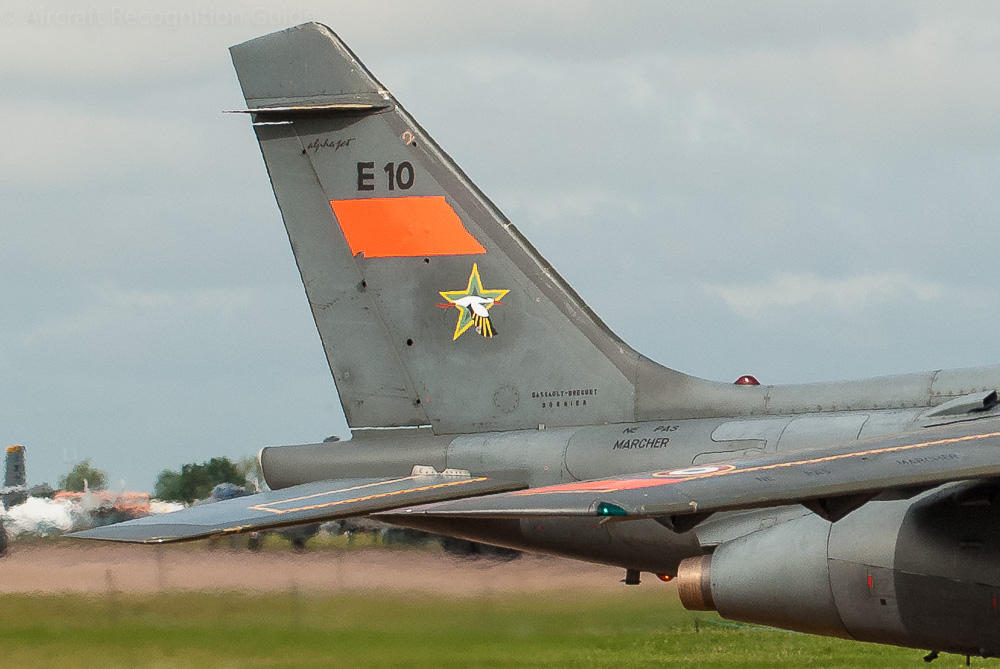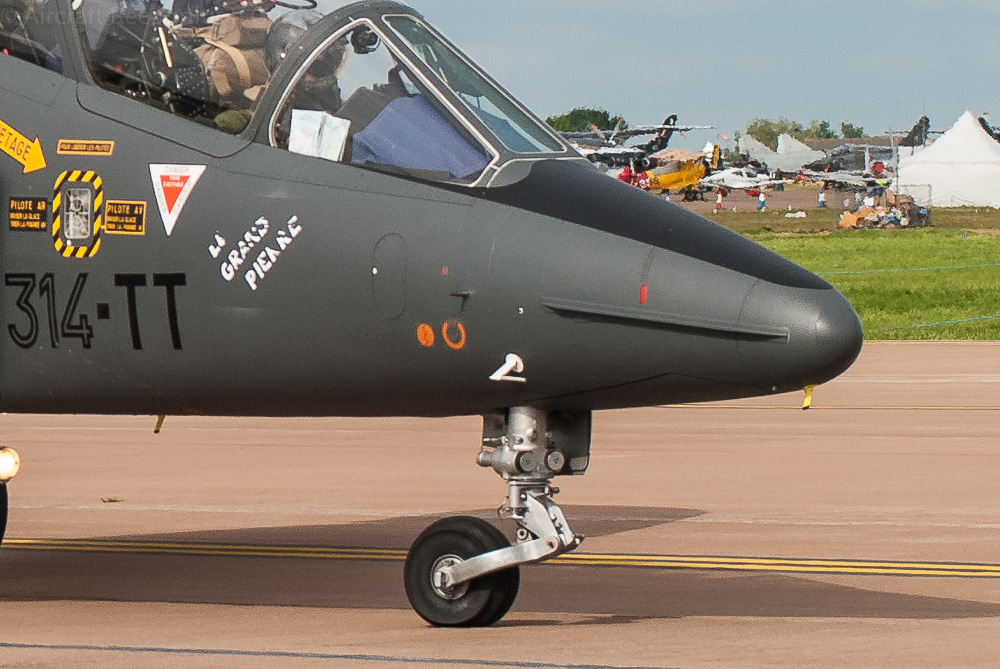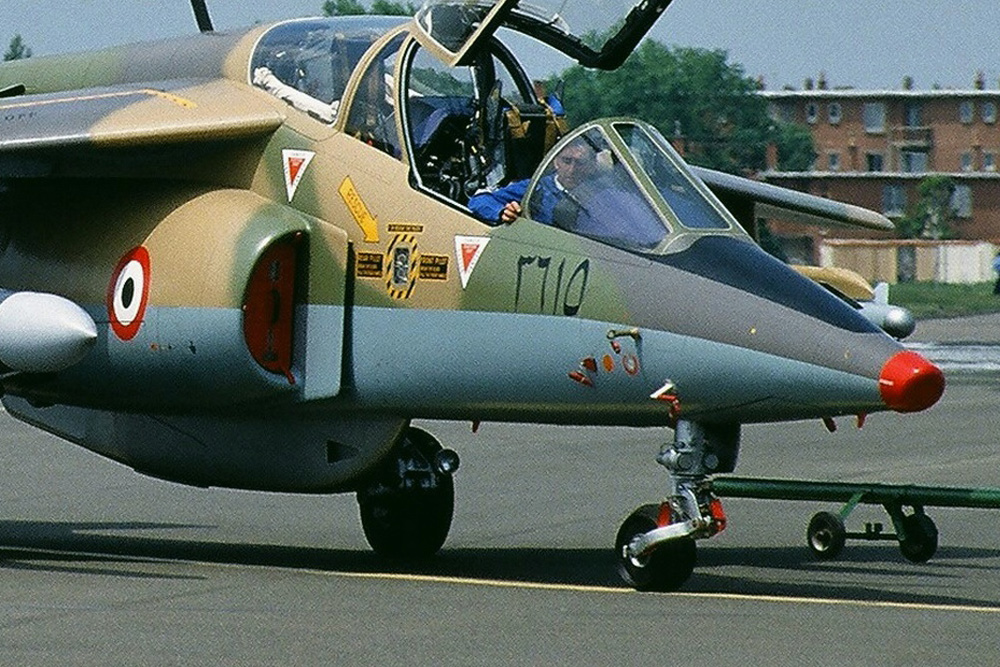
Dassault-Breguet/Dornier Alpha Jet
France and Germany teamed up when they were looking for a new advanced jet trainer and close air support aircraft respectively. The winning design was that of Dassault and Breguet in France and Dornier in Germany, called the Alpha Jet.
The Alpha Jet has high wings with horizontal stabilisers in regular position, both with anhedral. The student and instructor sit behind each other in the cockpit, the instructor higher than the student. The canopy opens in two parts, for each crew member separately. The semi-circular air intakes are below the instructor's seat. After that the air channels run below the wings; there is space between them. The exhausts with externally visible tail pipes are just in front of the vertical stabiliser, which has hardly a dorsal fin.
The externally visible tail pipes of the Larzac engines are just in front of the tail.
Different versions
The main external recognition point between the Alpha Jet versions is the shape of the nose.
Alpha Jet A & Alpha Jet MS1
The Alpha Jet A (for Appui Tactique) is the light attack, or close air support version of the Alpha, originally ordered by Germany, but later also by other countries. In Egypt locally produced aircraft are designated Alpha Jet MS1. Both are recognised by the sharply pointed nose.
Alpha Jet E
The E in this basic version, first ordered by France, stands for École, so is clearly is the trainer version. It is recognised by the rounded nose. The Belgians also ordered this version and called it Alpha Jet 1B.
Alpha Jet MS2, Alpha Jet 2 & Alpha Jet NGAE
Based on the Alpha Jet MS1 an updated version was made, called the Alpha Jet MS2. It has a cut off sharp nose as key feature. The Alpha Jet 2, at first known as Alpha Jet NGAE (Nouvelle Generation Appui/Ecole), was the Dassault developed modernised version, of which only a prototype was built.
Confusion possible with
Kawasaki T-4
The Kawasaki T-4 is obviously a look-a-like of the Alpha Jet. The air intakes of the T-4 are rectangular, and the air flow channel is attached to the wings. Also the vertical fin is higher and has a dorsal fin. Finally the canopy opens as a single piece.
PZL I-22 Iryda
Like on the Alpha Jet, on the Iryda there is space between the wings and engine flow channels. The air takes of the I-22 are more rectangular than semi circular and also closer to the wing leading edge. The engines have no visible tail pipes.
Aermacchi M346 Master
The M346 is a mid-wing aircraft, while the Alpha Jet has definately high mounted wings. Also the air intakes have a different shape and the M346 has leading edge extensions of the wings along the fuselage.
FMA IA-63 Pampa

The design of the Pampa is clearly influenced by that of the Alpha Jet, probably because Dassault helped FMA in the development. The Pampa is smaller though and has only one engine.
SIAI-Marchetti S211 & Leonardo M345

In many ways this aircraft looks like the the Alpha Jet, but it is smaller and also has one engine. There are smaller differences as well, such as horizontal stabilisers and nose gear doors.
British Aerospace Harrier
The tandem canopy, high wings and D-shaped air intakes of the two seat Harriers are similar to those of the Alpha Jet, but for the rest the Harrier is significantly different: the exhausts at the side of the fuselage and the tandem main landing gear are the most obvious ones.













